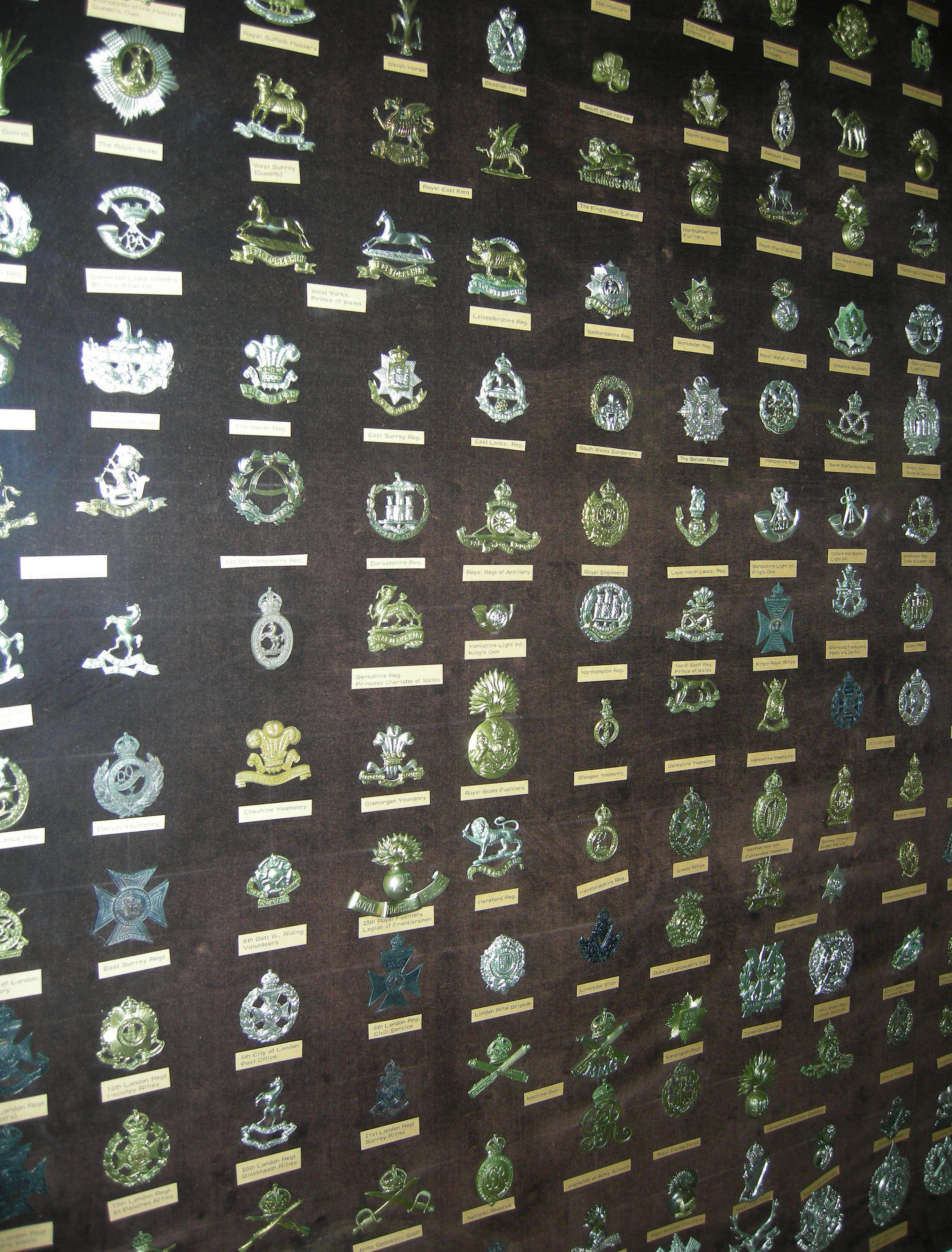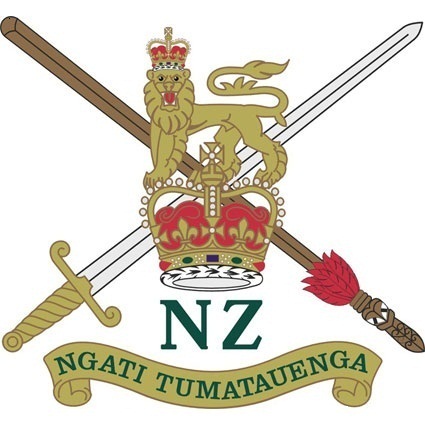|
4th Field Regiment (New Zealand)
The 4th Field Regiment was an artillery regiment of the New Zealand Military Forces raised during the Second World War. It saw service as part of the 2nd New Zealand Division during the Greek, North African North Africa (sometimes Northern Africa) is a region encompassing the northern portion of the African continent. There is no singularly accepted scope for the region. However, it is sometimes defined as stretching from the Atlantic shores of t ..., Tunisian and Italian campaigns, before being disbanded in January 1946. References * Artillery regiments of New Zealand Military units and formations established in 1940 Military units and formations disestablished in 1946 {{Mil-unit-stub ... [...More Info...] [...Related Items...] OR: [Wikipedia] [Google] [Baidu] |
Cap Badge
A cap badge, also known as head badge or hat badge, is a badge worn on uniform headgear and distinguishes the wearer's nationality and/or organisation. The wearing of cap badges is a convention commonly found among military and police forces, as well as uniformed civilian groups such as the Scouting, Boy Scouts, civil defence organisations, ambulance services (e.g. the St. John Ambulance Brigade), customs services, fire services etc. Cap badges are a modern form of Heraldic badge, heraldry and their design generally incorporates highly symbolic devices. Some badges that contain images of lions or other cats are sometimes informally referred to as cat badges. Instances in military forces British armed forces The British Armed Forces utilise a variety of metal and cloth cap badges on their headdress, generally on caps and berets. They are also worn on Uniforms_of_the_British_Armed_Forces#Turbans, Sikh turbans. British Army In the British Army (as well as other Commonwealth o ... [...More Info...] [...Related Items...] OR: [Wikipedia] [Google] [Baidu] |
Raymond Queree
Brigadier Raymond Candlish Queree, (28 June 1909 – 18 October 1975) was a senior officer in the New Zealand Military Forces during the Second World War and the postwar period. Born in Christchurch, Queree was commissioned into the New Zealand Staff Corps in 1929 following graduation from the Royal Military College at Sandhurst. He transferred to the Royal New Zealand Artillery in 1935. During the Second World War, he commanded the 4th Field Regiment during the North African campaign and was later a staff officer in the headquarters of the 2nd New Zealand Division. He was commander of the divisional artillery during the final stages of the Italian campaign. He held a series of important staff posts in the period after the war, retiring from the military in 1964. He was subsequently director of New Zealand's Civil Defence agency. Early life Raymond Candlish Queree was born in Christchurch, New Zealand, on 28 June 1909 and was educated at Christchurch Boys' High School, where h ... [...More Info...] [...Related Items...] OR: [Wikipedia] [Google] [Baidu] |
Artillery Regiments Of New Zealand
Artillery consists of ranged weapons that launch munitions far beyond the range and power of infantry firearms. Early artillery development focused on the ability to breach defensive walls and fortifications during sieges, and led to heavy, fairly immobile siege engines. As technology improved, lighter, more mobile field artillery cannons were developed for battlefield use. This development continues today; modern self-propelled artillery vehicles are highly mobile weapons of great versatility generally providing the largest share of an army's total firepower. Originally, the word "artillery" referred to any group of soldiers primarily armed with some form of manufactured weapon or armour. Since the introduction of gunpowder and cannon, "artillery" has largely meant cannon, and in contemporary usage, usually refers to shell-firing guns, howitzers, and mortars (collectively called ''barrel artillery'', ''cannon artillery'' or ''gun artillery'') and rocket artillery. In common ... [...More Info...] [...Related Items...] OR: [Wikipedia] [Google] [Baidu] |
Official History Of New Zealand In The Second World War 1939–45
The ''Official History of New Zealand in the Second World War 1939–45'' is a 48-volume series published by the War History Branch (and its successors) of the Department of Internal Affairs which covered New Zealand involvement in the Second World War. The series was published during the period 1949 to 1986. A collection of booklets entitled ''Episodes and Studies'' were also published between 1948 and 1954. The ''Official History of New Zealand in the Second World War 1939–45'' was the largest publication project undertaken in New Zealand. Background It had long been felt in New Zealand that the four-volume 'popular' history of the New Zealand Expeditionary Force, the '' Official History of New Zealand's Effort in the Great War'' which had been published a few years after the First World War ended, had not matched the standard set by the '' Official History of Australia in the War of 1914–1918'', edited by Charles Bean. In 1940, with a view to the production of an offici ... [...More Info...] [...Related Items...] OR: [Wikipedia] [Google] [Baidu] |
Tunisian Campaign
The Tunisian campaign (also known as the battle of Tunisia) was a series of battles that took place in Tunisia during the North African campaign of the Second World War, between Axis and Allied forces from 17 November 1942 to 13 May 1943. The Allies consisted of British Imperial Forces, including a Greek contingent, with American and French corps. Despite initial successes by the German and Italian forces brought from the mainland and which had withdrawn into and occupied Tunisia after their defeat in the Western Desert and the success of Operation Torch, massive supply interdiction efforts and Allied assaults from east and west led to the decisive defeat of the Axis. Over 260,000 German and Italian troops were taken as prisoners of war, including most of the Afrika Korps. Background Western Desert The first two years of the war in North Africa were characterized by chronic supply shortages and transport problems. The North African coast has few natural harbors ... [...More Info...] [...Related Items...] OR: [Wikipedia] [Google] [Baidu] |
North African Campaign
The North African campaign of World War II took place in North Africa from 10 June 1940 to 13 May 1943, fought between the Allies and the Axis Powers. It included campaigns in the Libyan and Egyptian deserts (Western Desert campaign, Desert War), in Morocco and Algeria (Operation Torch), and in Tunisia ( Tunisia campaign). The Allied war effort was dominated by the British Commonwealth and exiles from German-occupied Europe. The United States entered the war in December 1941 and began direct military assistance in North Africa on 11 May 1942. Fighting in North Africa started with the Italian declaration of war on 10 June 1940. On 14 June, the British 11th Hussars and part of the 1st Royal Tank Regiment, (1st RTR) crossed the border from Egypt into Libya and captured Fort Capuzzo. This was followed by an Italian counter-offensive into Egypt and the capture of Sidi Barrani in September. The British recaptured Sidi Barrani in December during Operation Compass. The Italian 1 ... [...More Info...] [...Related Items...] OR: [Wikipedia] [Google] [Baidu] |
German Invasion Of Greece
The German invasion of Greece or Operation Marita (), were the attacks on Kingdom of Greece, Greece by Kingdom of Italy, Italy and Nazi Germany, Germany during World War II. The Italian invasion in October 1940, which is usually known as the Greco-Italian War, was followed by the German invasion in April 1941. Battle of Crete, German landings on the island of Crete (May 1941) came after Allied forces had been defeated in mainland Greece. These battles were part of the greater Balkans campaign (World War II), Balkans Campaign of the Axis powers and their associates. Following the Italian invasion on 28 October 1940, Greece, with British air and material support, repelled the initial Italian attack and a counter-attack in March 1941. When the German invasion, known as Operation Marita, began on 6 April, the bulk of the Greek Army was on the Greek border with Albania under Italy, Albania, then a vassal of Italy, from which the Italian troops had attacked. Wehrmacht, German troops i ... [...More Info...] [...Related Items...] OR: [Wikipedia] [Google] [Baidu] |
Artillery
Artillery consists of ranged weapons that launch Ammunition, munitions far beyond the range and power of infantry firearms. Early artillery development focused on the ability to breach defensive walls and fortifications during sieges, and led to heavy, fairly immobile siege engines. As technology improved, lighter, more mobile field artillery cannons were developed for battlefield use. This development continues today; modern self-propelled artillery vehicles are highly mobile weapons of great versatility generally providing the largest share of an army's total firepower. Originally, the word "artillery" referred to any group of soldiers primarily armed with some form of manufactured weapon or armour. Since the introduction of gunpowder and cannon, "artillery" has largely meant cannon, and in contemporary usage, usually refers to Shell (projectile), shell-firing Field gun, guns, howitzers, and Mortar (weapon), mortars (collectively called ''barrel artillery'', ''cannon artil ... [...More Info...] [...Related Items...] OR: [Wikipedia] [Google] [Baidu] |
Graham Beresford Parkinson
Major General Graham Beresford Parkinson, (5 November 1896 – 10 July 1979) was a professional soldier in the New Zealand Military Forces who served during the First and Second World Wars. Born in Wellington, New Zealand, Parkinson was commissioned as a lieutenant in the New Zealand Military Forces in 1916 and served in the First World War as part of the New Zealand Field Artillery. He remained in the military during the interwar period and served in a number of staff and training positions. Following the outbreak of the Second World War, he commanded an artillery regiment in the Western Desert campaign and participated in the Battle of Greece. In late 1941 he returned to New Zealand to command newly raised formations, but returned to the Middle East in 1943. He commanded the 6th Infantry Brigade of the 2nd New Zealand Division during the Italian campaign, at one stage taking over temporary command of the division itself. After the war he served as Quartermaster General ... [...More Info...] [...Related Items...] OR: [Wikipedia] [Google] [Baidu] |
Royal Regiment Of New Zealand Artillery
The Royal Regiment of New Zealand Artillery is the artillery regiment of the New Zealand Army. It is effectively a military administrative corps, and can comprise multiple component regiments. This nomenclature stems from its heritage as an offshoot of the British Army's Royal Artillery. In its current form it was founded in 1947 with the amalgamation of the regular and volunteer corps of artillery in New Zealand. In 1958 in recognition of services rendered it was given the title the ''Royal Regiment of New Zealand Artillery''. History Predecessors and formation The Royal Regiment of New Zealand Artillery's predecessor units in the Volunteer Force (New Zealand), Volunteer Force date from February 1866, when the first field artillery battery and naval artillery corps were formed. From 1878 the various field batteries were administratively grouped together as the New Zealand Regiment of Artillery Volunteers, and were designated alphabetically. The naval artillery batteries were ... [...More Info...] [...Related Items...] OR: [Wikipedia] [Google] [Baidu] |
Second World War
World War II or the Second World War (1 September 1939 – 2 September 1945) was a World war, global conflict between two coalitions: the Allies of World War II, Allies and the Axis powers. World War II by country, Nearly all of the world's countries participated, with many nations mobilising all resources in pursuit of total war. Tanks in World War II, Tanks and Air warfare of World War II, aircraft played major roles, enabling the strategic bombing of cities and delivery of the Atomic bombings of Hiroshima and Nagasaki, first and only nuclear weapons ever used in war. World War II is the List of wars by death toll, deadliest conflict in history, causing World War II casualties, the death of 70 to 85 million people, more than half of whom were civilians. Millions died in genocides, including the Holocaust, and by massacres, starvation, and disease. After the Allied victory, Allied-occupied Germany, Germany, Allied-occupied Austria, Austria, Occupation of Japan, Japan, a ... [...More Info...] [...Related Items...] OR: [Wikipedia] [Google] [Baidu] |





